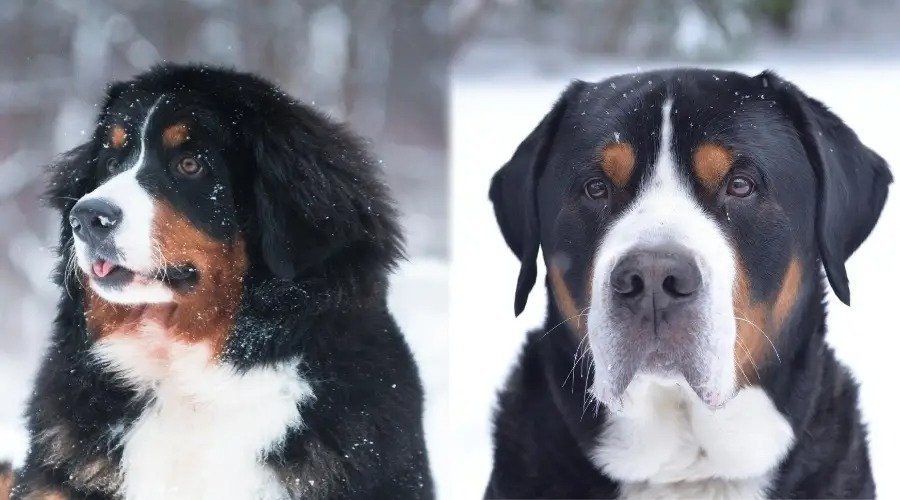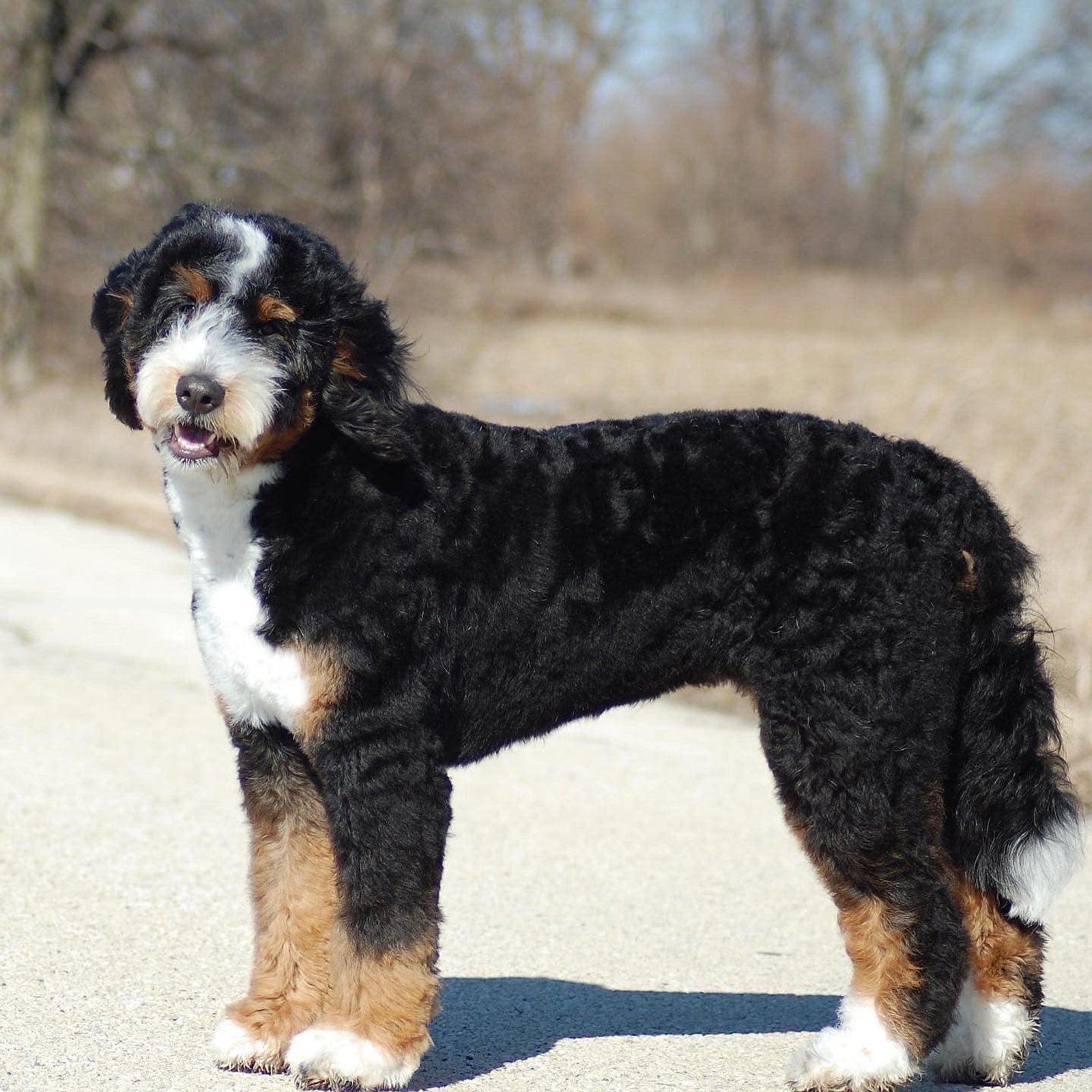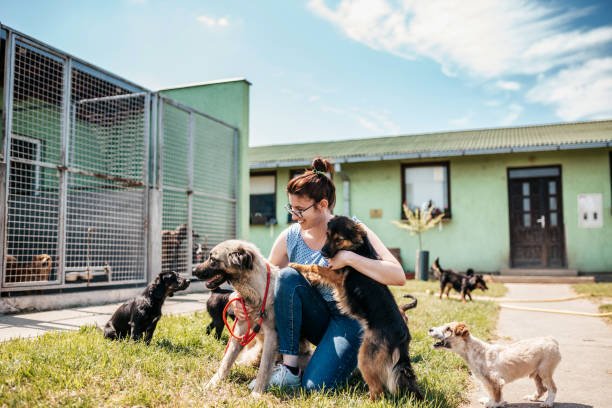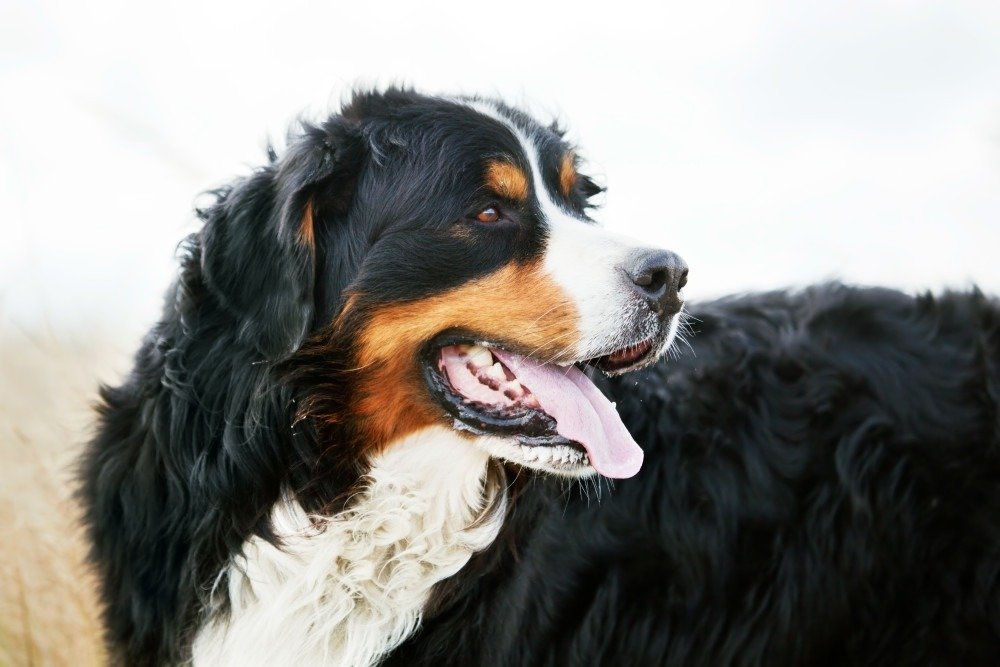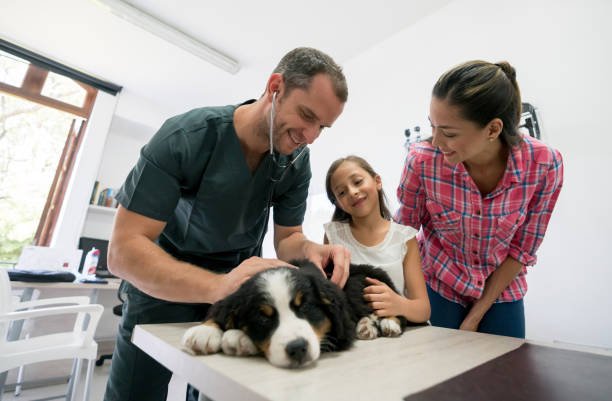What characterizes a Bernese Mountains Dog from a Bigger Swiss Mountain Dogs?
When adding the component to your extended family. Are you thinking of a Swiss Mountain Dogs or a Bernese Mountain Dog? Let’s examine the distinctions and parallels between these two outstanding breeds.
The Greater Swiss Mountain Dog has its origins in Julius Caesar’s war canines. Which he used to lead his forces across the Alps in an attempt to bring down Europe. To pull carts filled with dairy and meat goods up the mountains to the marketplace. Their journey has become known as “the destitute male horse” as a result.
Although Switzerland has produced numerous amazing dog breeds. None is certainly as well-known as the enormous, tricolored Bernese Mountain Dog. These stunning and loving canines are easy. However, there is another Swiss breed that shares its cultural roots and appearance. People occasionally mistake the Greater Swiss Mountain Dog, a devoted. And powerful member of the Working Group, for a Bernese. Continue reading to find out how to distinguish between these two Swiss Alps dogs.
Closely linked to the Greater Swiss, the Bernese Mountain Dog is native. To an area of Switzerland well-known for its chocolate and cheese. Both are Saint Bernard and Rottweiler foundation breeds.
A Short History of The Bernese Mountain Dog
The Appenzeller Sennenhund, Entlebucher Mountains Dog, Greater Swiss Mountain Dog. Bernese Mountain Dog are the four representatives of the tricolored species. Of Swiss mountain dogs. In the past, Swiss Mountain dogs served as general-purpose farm dogs. For their families, driving animals, pulling milk wagons. And keeping an eye on the property and wildlife. Of certain native Swiss mountain agricultural dogs and big old Roman military dogs. They were introduced to the region about 2000 years ago. During the Roman conquest of Helvetia (modern-day Switzerland). Large canines with exceptional power and endurance were the product of the cross.
Some referred to them as the Clydesdales of the canine world because of their skill at carting. The Bernese Mountain Dog was originally named the Durbacher after a location. Where the breed’s predecessors were most prevalent and preferred. Has a lengthy and fascinating history. Which means “Mountain Pasture dog of Berne” in German. Eventually, the Canton of Berne, a region in Switzerland. Where the type of dog originated, came to be renowned.
In the past, there were many Bernese Mountain Dogs in their own country. Still, the breed’s popularity started to decline. In agricultural technology. And a lack of official initiatives to breed. The popularity of the Bernese Mountain Dog started to rise gradually. Farmers from all over the region began bringing their Dürrbächler dogs to dog shows.
An Overview of the Greater Swiss Mountain Dog’s History
The Greater Swiss Mountain Dog originated from Mastiff-type canines that were employed 2000 years ago in Roman armies. Out of the four varieties of Swiss Mountain Dogs, they are the biggest and the oldest. Before two specimens were given to Dr. Albert Heim, who identified the breed and had it registered with the Swiss Cynological Society in 1909, this breed was on the edge of destruction in the late 1800s.
The Fédération Cynologique Internationale released the first standard in 1939. Because of their dependable, peaceful nature, these dogs are now mostly bred for relationships, but they were once valued for their ability to protect.
Comparable appearance and place of origin
Under the prefix Nashem, Sara Karl, an AKC judge and the AKC representative for the Bernese Mountain Dog Club of America, has been producing and exhibiting Bernese since 1986. “Only when the Berner is removed from coat,” she responds when asked if people frequently mix up the Bernese Mountain Dog and the Greater Swiss Mountain Dog.
The primary similarity between the two breeds, according to Karl, who has bred over 100 leaders, performance-titled Berners, and two National Specialty winners, is their physical characteristics and traditional purpose. They are equally enormous breeds of canines in black, red, and white.
However, Liz Coit, an AKC breeder of excellence and member of the Greater Swiss Mountain Dog Club of America, pointed out that the Berner is a more popular breed than the Swissy and, therefore, more recognizable to most people. Frequently, people inquire as to whether the Swissy is a Berner or, better yet, a shaved Berner. Therefore, I believe the problem is the Swissy’s unfamiliarity with the wider population.
Coit, who owns three Swissies, among them Shine, the 2020 Ambassador of the Breed winner, concurs that the breed’s appearance and background as farm dogs are similar. Regarding both breeds, she states, “They are recognized for their eye-catching tricolor coats and attitude.” Both act as watchful guards, alerting the family to any imagined threats or even just a shift in the wind’s direction.
Variations in Coat and Character
Even though many confuse the Swissy for the Berner, there are distinct structural differences. The Greater Swiss Mountain Dog breed guideline states that male Swissies should weigh between 115 and 140 pounds and have a shoulder height of up to 28.5 inches. Male Berners can grow to a height of 27.5 inches and weigh between 80 and 115 pounds. They are slightly smaller than other breeds.
Another notable distinction between the breeds is their coats. While the Swissy has a smaller double coat, the Bernese has a longer one. She goes on, saying, “There are some differences between the Swissy and Berner standards, such as the markings (which are brown and white) and head form. Compared to Berner breeders, we are more tolerant of marking diversity in Swissies, and naturally, our coat is not as defining a characteristic as it is in Berners.
The Swissy has a more intense industrial temperament than the other breed, even though both are friendly with youngsters and devoted to their families. While the Swissy breed standard refers to them as “alert and vigilant,” the Bernese Mountain Dog breed regulation characterizes Berners as “alert and good-natured.” Furthermore, the questioning Swissy is more eager to make strangers with new individuals than the aloof Berner. Karl claims that while both are straightforward to train and get along well with people, “Bernese are a little sweeter than the Greater Swiss.”
Dedicated and Caring for Dogs
In the Swiss region of Bern, the Berner breed of farm dog was developed for all-around use. Karl claims that farmers employed them for farm security, pulling carts of milk and cheese to markets, and moving milk cows from a particular pasture to another. Possibly because of their history of collaborating closely with farmers, this kind and affectionate breed is committed to its family.
Karl believes that the breed’s attributes of beauty, stockiness, and love apply to them. Claims that having a Berner requires a lot of hair loss. She recommends leather seating and an excellent vacuum. They are also adversely affected by hot temperatures. Although they may survive in warmer climates, you should keep them out of the sun during the hottest parts of the day.
According to Coit, among the Sennehund breeds (Swiss mountain dogs), the Swissy is one of the oldest and biggest. The Swissy’s harsh bark of caution and alertness serves as a sentinel, a legacy of its guardian pedigree.
For experienced owners or owners prepared to learn everything these huge breeds demand, both types may make wonderful companions. Karl recommends using Bernergarde.org to look up possible breeders of Berners.
Lifestyle, Instruction, and Temperament
Because of their affectionate nature and commitment to their families, both kinds are highly valued. In terms of stature and disposition, the Swiss are a little more threatening. These strong dogs tend to go through the puppy stage more slowly, and they have a booming bark that your neighbors could not enjoy. Due to their size, they may test a parent’s tolerance throughout this protracted puppy stage. At 100 pounds, their ungainly, awkward bodies might make bumps and huge paws too much for them to handle.
Although both breeds make wonderful family pets, the Bernese would prevail in the Gentle Giant battle over the Swiss.
Instruction
When it comes to training, food is a terrific motivation to assist teach positive habits in Swiss Mountain Dogs, which can be a bit more resistant , and should start training young.
Similar to Swiss dogs, Bernese are intelligent canines that are more motivated to please their owners. They are more vulnerable to criticism and separation because of their loving disposition.
Work out
Both breeds need an average amount of daily activity. They work well for owners who enjoy taking their dogs for peaceful walks or hikes in the outdoors, but they are not the best fit for serious bikers and joggers who like training alongside their pets. Both make excellent camping dogs, and they can even tow children and camping supplies in a wagon.
Every day, the Berner and the Swissy require one hour of exercise. Whether or whether there is snowfall on the ground makes no difference in fact, they would both like it. They require long, leisurely walks through the nearby park or natural reserve because they are big dog breeds. They both enjoy being outside and will develop cabin fever if kept indoors for an extended period.
The best course of action is to completely avoid physically demanding tasks because too much pressure can lead to abnormalities in development.
With less social engagement during the day, the Berner is the more relaxed pup. The Swissy requires a lot more company during the day to get rid of his excess energy. Consider harder play sessions, difficulties, and the requirement for long-lasting dog toys.
Well-being & Health
Neither the Swiss nor the Bernese Mountain Dogs are known to have any breed-specific illnesses, making them both generally healthy dogs. However, they are prone to health concerns like elbow, neck, shoulder, and hip joint troubles that often affect larger species. Nevertheless, their musculoskeletal health generally looks good overall. Additionally, bloat is a serious medical condition that can affect any large breed; owners just need to understand what to watch for.
The American Kennel Club advises evaluating puppies for eye health issues in addition to elbow, shoulder, and hip dysplasia. AKC additionally suggests a Von Willebrand’s (clotting) Disease DNA test for Bernese, especially. The Swiss Mountain Dog lives eight to eleven years, while the Bernese Mountain Dog lives between seven and ten years.
Grooming and Weeping
Possimply the most noticeable distinction between the two breeds is this. Compared to Swiss dogs, Bernese wear longer, thicker coats, which means they need more maintenance. Naturally, Bernese shed continuously, but their lengthy outside coat and wooly underneath shed severely twice a year. Owners may occasionally need to use an iron comb or toothbrush to untangle their fur because of its longer length.
Conversely, the Swiss have lower standards for grooming. They require less care and have a double coat as well. A blowout of the overcoat twice a year throughout periods of greater shedding would be beneficial to them. A periodic bath and brushes, however, maintain the Swiss looking well.
Nourishment
Every day, the Berner will drink from three to four cups of food, whereas the Swissy will drink four to five cups. Their age, size, and level of energy all affect how much they eat. They are both prone to rapid weight gain, particularly the Berner with his easygoing disposition, so watch out not to overfeed them. You must closely monitor their dietary consumption since obesity may compound existing health issues.
Both of them needed to be provided with a premium diet that offered them well-balanced nutrients. An excellent meal consists of genuine livestock meat, carbohydrates, fiber, healthy fats, calories, and elements. Two other crucial components to look out for are chitosan and ibuprofen since they will preserve their enormous joints.
Since they are both huge breeds, they should be provided kibble made especially for them, especially in their puppy years when their development is very quick. These will have the ideal balance of nutrients that they require. This is especially crucial while the project is still under development. According to research, they can aid in delaying or preventing bone problems that both breeds have a susceptibility to, such as elbow, shoulder, and hip dysplasia.
Conclusion
In conclusion, the background, appearance, personality type, and care needs of the Bernese Mountain Dog and the Greater Swiss Mountain Dog are comparable and differ from one another.
There are noticeable variations in height, coat length, and disposition between the two breeds, despite their remarkable tricolor coats and kind dispositions. In contrast, the Greater Swiss Mountain Dog is bigger, has a thinner fur, and possesses a more industrialized temperament characteristic.
FAQs
What makes a Bernese Mountains Dog different from a Bigger Swiss Mountain Dogs?
Size, coat length of sentence, and personality all differ. The Greater Swiss is bigger, has a thinner coat, and tends to be a more intense dog than the Bernese, which is somewhat smaller and has a longer coat.
What is behind each of these dog breeds from the Swiss mountain Dogs ?
Both breeds began life as adaptable farm dogs in Switzerland; the Greater Swiss descended from Mastiff-type hounds used in Roman legions, while the Bernese mixed military and native Swiss dogs.
What prevented the mountain dog from Bernese from going extinct in the nineteenth century?
By starting breeding programs and creating breed standards, Professor Albert Heim and Swiss cynologist Herr Franz Schertenleib were instrumental in preventing the wiped out of the Bernese Mountain Dog.
Do their looks and functions resemble each other?
It’s true that both breeds have multicolored coats and were intended for farm work, such as pushing wagons full of produce to marketplaces in the Swiss Alps.

